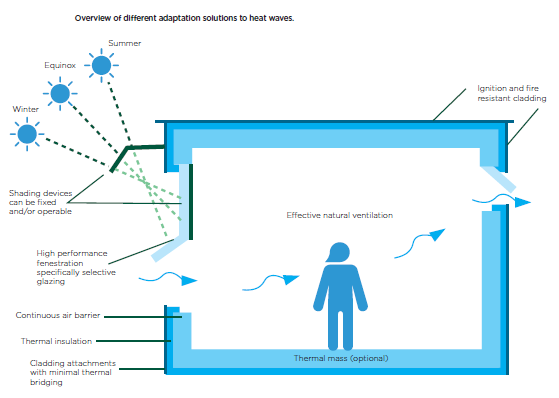EU-level technical guidance on adapting buildings to climate change – Best practice guidance
In March 2023, the EU Commission published the report “EU-level technical guidance on adapting buildings to climate change”. The report includes 2 parts: a broader technical guidance; and a best practice guidance for concrete applications.
The best practice guidance provides technical guidance on climate-adaptation measures that are relevant for both new and existing buildings across the different climatic zones of Europe; presents adaptation solutions for the climate risks that affect the built environment most; and demonstrates the actions that can be taken to improve building performance. Within this best practice guidance, priority hazards are defined as climate-related hazards (typical in the EU, with significant impact on a building and its users) aiming to align with the EU Taxonomy-defined climate-related hazards.
The document presents an overview of the priority hazard and the impact it has on the built environment’s wellbeing of building users and identifies a comprehensive set of solutions for each part of the building. Among the solutions identified for heat waves is natural ventilation & passive cooling;
According to the report: “Windows are critical for effective natural ventilation of a building. In particular, the night time removal of hot indoor air through windows is essential. Ventilating or cooling a building with no energy consumption as part of a design feature is referred to as passive ventilation. Passive ventilation may be achieved through either cross or stack ventilation…”,… “Passive cooling is a measure that uses no energy to cool buildings. It involves solar -shading installations that reduce automatically or manually the amount of heat and light entering the building. Installations can include external window shutters and brise-soleil features above glazing…”
Please click here to download and read the document.

